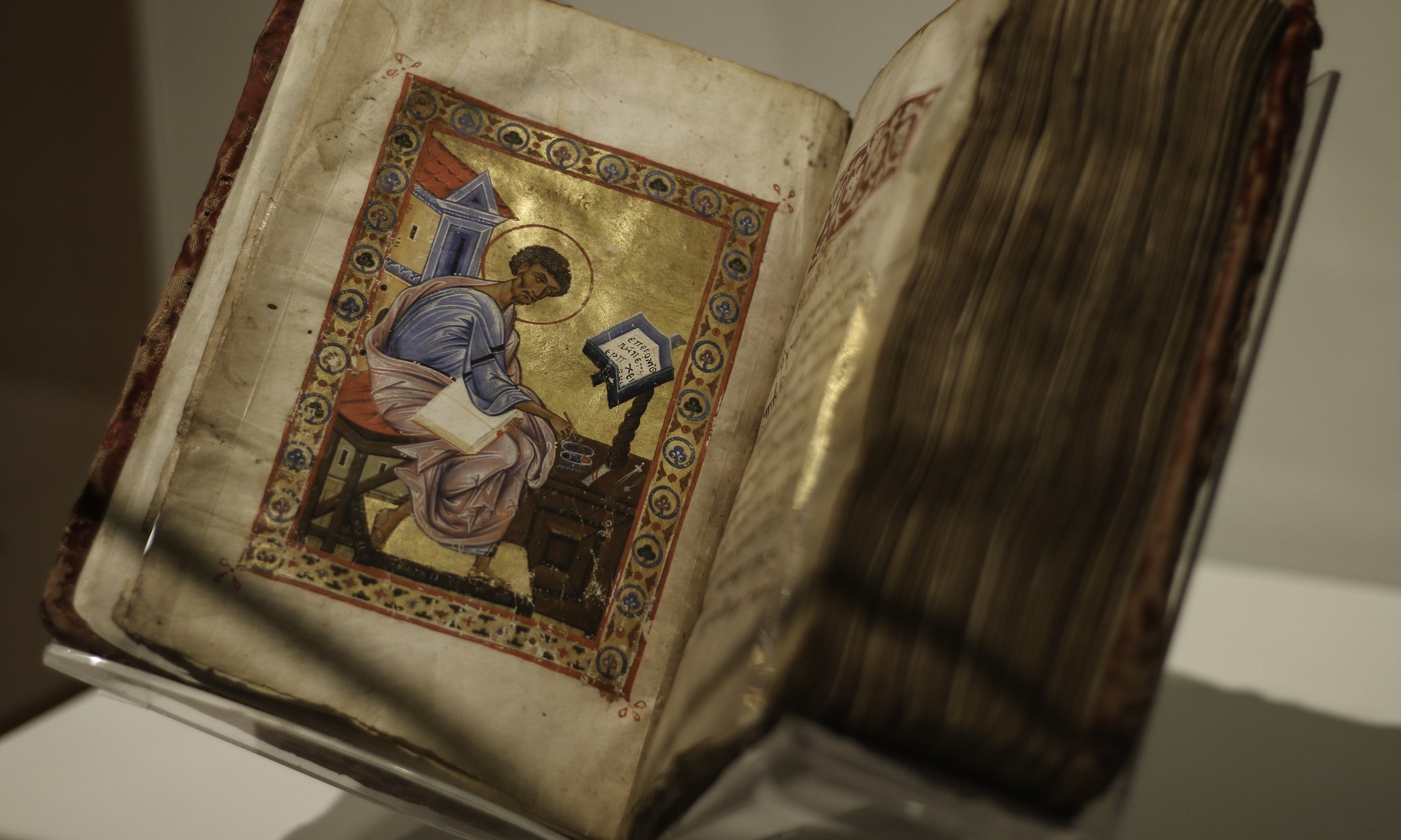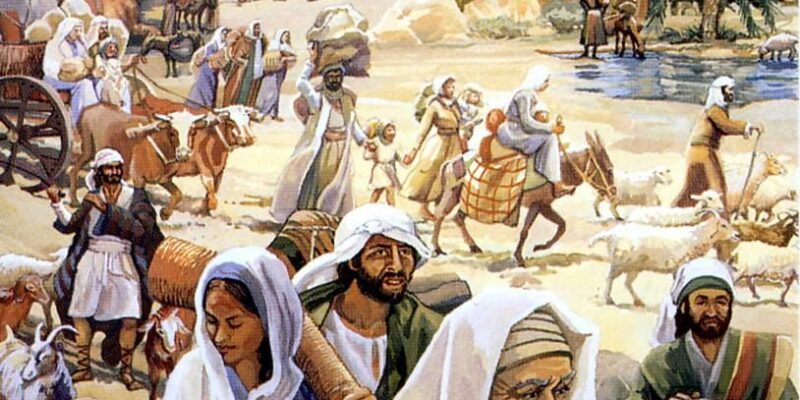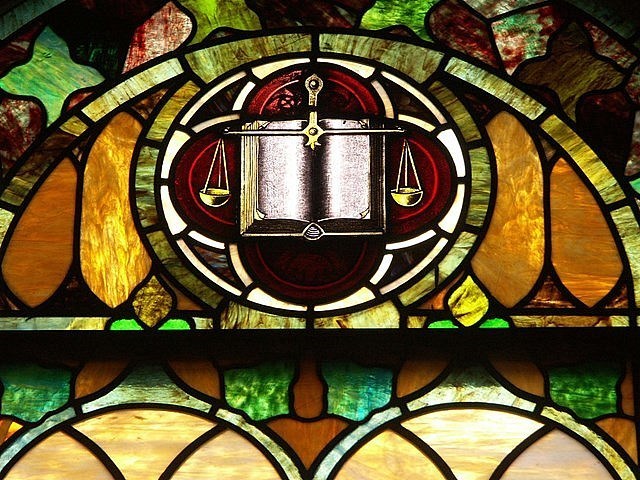NOTE: This is part of a 3-part series. The first is Wandering Through Leviticus Part I, and following this is Wandering through Leviticus Part III.
The Priests
This week, we dove into our discussion of Leviticus by profiling the Priests making sacrifices. Leviticus Priests were like butchers or surgeons. This is not the modern pastor, who is clean, orderly, and organized, preaching his 3-point sermon from notes on an iPad atop a crystal clear podium. This is a professional with a butcher’s block, doing hard and messy physical labor for the sake of atoning for the sins of the people in his community. The Priest surgically removes layers of fat, which belong to God, and works to deconstruct the animals for sacrifice in a very detailed and efficient manner. The attention to methodology in the first several chapters in Leviticus gives the impression that the Priests were proud of their labor and strategized the intricacies of sacrifice. As a reward for all their hard work, the priests get to eat the meat which has become divinely blessed.
Yet, even with all the carnage and visceral details, there are also written some magical qualities. The Priests’ clothing, for example, is detailed and colorful, and mystical. The inclusion of the ‘urim and thummim” in Leviticus 8.8 (also mentioned in Exodus 28.30) causes a pause in any translation. What do these words mean? Linguistic cognates invite us to consider words for “light” and “glow.” The words are both in the plural form (marked by the “îm” ending), so “light (flashes)” and “glow (pulses)”? These sorts of references lead to more questions than answers. It’s hard not to get a distinct feeling that something science fiction-ey is going on. This is the kind of trail that can lead a person down the conspiracy rabbit hole into the world of ancient aliens and pre-civilization advanced technologies. However, back in the real world, it is most likely referencing an ancient symbol that has something to do with perfection and how divinity was marked or noted among certain holy people in the ancient Near East.
Sin and Sacrifice
In the opening chapters of Leviticus, which describe various types of sacrifice, all matters of atonement by sacrifice were a response to unintentional sins. No sacrifices were allotted for intentional sin, leaving us to question if there is ever any atonement for intentional sin. The sacrifice model is such a prevalent idea in salvation theology, even in the New Testament. This may have reflected ancient attitudes about willing and open defiance in one’s own social setting. Presumably, intentional sins against the community led to death or expulsion. However, there may also be a resolution in the scapegoat (ch. 16) discussed in the next post.
The lawyer in our small group tries to read Leviticus as a contract. The section on sacrifice describes what to do in case of an issue. The specific direction provides a clear solution to the Priest for how to respond in several individual circumstances. Furthermore, ‘alternative’ sacrifices are listed as accommodations for people who can’t afford the proper rites. This serves as an act of inclusion; however, here is a clear hierarchy of preference. It becomes clear that justice is for those who can afford it.
The guided response of sacrificial gifts in exchange for purification of the guilt that comes with sin brings up the discussion of holiness. The sacrificial model is meant to remind people of the division between them and God. The profane or uncleanliness of humanity is normative. Purity was a special process for the rite of passage, for example, engaging in holy seasons or for the Priests who perform the sacrifice.
The sacrifices are categorized: the burnt offering, the guilt offering, the offering of offense, and well-being (7.37). The nuances of these sacrifices may be found in the more literal translations. The burnt offering in Hebrew refers to the offering going up, probably referring to the smoke, or even the aroma, that rises as burned. From this description, we might think about God as one who is pleased with the smell of hamburgers. The guilt offering is more literally the offering for debt or fine repayment. The so-called sin offering is an offering for an offense. Finally, the offering of well-being is what it says, a shalom offering, an offering of peace, wholeness, thanksgiving, or wellness.
Offerings and Lies
As confusing as some of the restrictions, allowances, and their consequences may be to a modern reader, it also seems that things were a little hazy for the ancients as well, at least for Aaron and Moses. Two of Aaron’s sons when they are consumed by the fire of what appears to have been a sacrifice-gone-wrong. Leviticus 10.1 reads that two of Aaron’s sons Abihu (which means “he is father”) and Nadab (which means something like “capable”), put a dish and incense on an altar, offering a fire; that is either “strange” or “scattered.” It is noted that God did not command this, so it was of their own volition (ironically, or maybe not, “free volition” is a possible translation of the name Nadab). The scattered fire came out of the altar and swallowed up Aaron’s sons. This event happens in the narrative just after Aaron blesses the people while sacrificing the sin offering, the burnt offering, and the offering of well-being. In response to which fire came out and consumed the burnt offering and the fat on the altar. (Lev 9.22-24) Presumably, we have a proper sacrifice offering followed by the story of an improper sacrifice and its deadly consequences. Moses responds by telling Aaron that this is how God reveals the holiness and glory of the Godself. The narrative makes a point of stating Aaron’s response. The verb at the end of verse 3 has a range of meanings, which could account for various translations, including “Aaron was silent,’ or “Aaron held his peace.” The word might also indicate that Aaron was astonished or motionless. It is difficult to imagine that Aaron was not shocked after the violent death of two of his sons.
This short narrative reminded all of us of a story in the New Testament, the story of the two who God struck down for lying about their financial offering. In Acts 5.1-11, Ananias and Sapphira committed to giving part of their belongings to the church; however, when the time came, Ananias lied about what they had and what they intended to give God struck him down. A few hours later, his wife, Sapphira, came and lied and was struck down dead. In Acts, the sacrifice was about holding back from God what they had already committed, which seems different from lighting a “strange fire,” but echoes of the older Leviticus story in the Acts passage. Aaron’s sons made an offering that God did not command, and therefore they were killed. Ananias and Sapphira seemed to be also under no obligation to give their possessions to God (Acts 5.3-4). Like in Abihu and Nadab’s short tale, an improper sacrifice was put forward, and the parties involved suffered death for lack of integrity.
Immediately following this incident, Moses continues his instruction to Aaron, and we meet Aaron’s remains two sons, Eliazar (whose name means “God helps”) and Ithamar (whose name is difficult to translate but possibly related to a date-palm). Even as Moses conveys some admittedly odd instructions, he discovers that one of the animals of sacrifice was eaten in the wrong area. This time Aaron is not silent. In Lev 10.19, he defends his sons, saying that this was all done on the same day and seemingly begging for some perspective as an allowance. Moses then agrees with Aaron, and supposedly no harm comes to the sons. There is probably a good reason to ensure that the Priests are held to a higher standard of knowledge and obedience, but if God strikes down every corrupt Priest down, there might be nothing left of the Levites. It is difficult to understand the nuances of these instructions regarding when and where these sacrifices may be eaten, but if it seemed confusing even to Moses and Aaron, how much more so to us a few thousand years later!
Clean Your Plate
The following verses describe what may and may not be eaten. These eating rules are fairly well known, and many religious traditions follow dietary guidelines in today’s world. There is quite a bit of tolerance for such distinctions. People don’t realize that food groups are also subject to cultural value formation that has nothing to do with religion. For example, some cultures believe it is perfectly natural to eat animals that other cultures consider household pets and companions (like cats and dogs). One group member pointed out that even with a common animal, regional eating habits dictate preference. For example, people in Mexico and the United States prefer to eat different parts of the cow, so political trade agreements like NAFTA take this into account when negotiating and creating efficient distribution channels.
Scholars have deliberated over several possible reasons for the dietary laws. Some attribute these food groups to recognition of nutritional value, others to the idea that certain animals are “bad,” other animals might have pagan associations (this is likely the case with pigs since pigs were popular cuisine among the Philistines, the Israelites primal enemy), some believe the dietary restrictions conform to the ideal, others believe this was reflective of a heavenly ritual or “God’s diet.” Ultimately, whatever the actual reasoning behind these laws, it is apparent that these dietary restrictions were drilled into the minds of Israelites from the time they were very young, and it was all tied to a religious structure. Today, the general population doesn’t tout a written list of animals okay for consumption. Still, we do have a particular list of animals that would not be presented on the menu of a local diner. Imagine any animal or insect that might bring an “ew” factor to your next neighborhood barbecue. Off the top of my head, there are beetles, slugs, cats, lizards, and frogs.
NOTE: Something interesting about Reading these chapters in Leviticus. The Hebrew Bible text includes a different chapter division at Chapter Six. Where the English Bible begins 6.1 after 5.19, the Hebrew Bible begins 6.1 after 5.26. The verses are in the same order so that 6.1-30 in the English Bible corresponds with 5.20-26; 6.1-23 in the Hebrew Bible.

Dr. Erica Mongé-Greer, holding a PhD in Divinity from the University of Aberdeen, is a distinguished researcher and educator specializing in Biblical Ethics, Mythopoeia, and Resistance Theory. Her work focuses on justice in ancient religious texts, notably reinterpreting Psalm 82’s ethics in the Hebrew Bible, with her findings currently under peer review.
In addition to her academic research, Dr. Mongé-Greer is an experienced University instructor, having taught various biblical studies courses. Her teaching philosophy integrates theoretical discussions with practical insights, promoting an inclusive and dynamic learning environment.
Her ongoing projects include a book on religious themes in the series Battlestar Galactica and further research in biblical ethics, showcasing her dedication to interdisciplinary studies that blend religion with contemporary issues.




